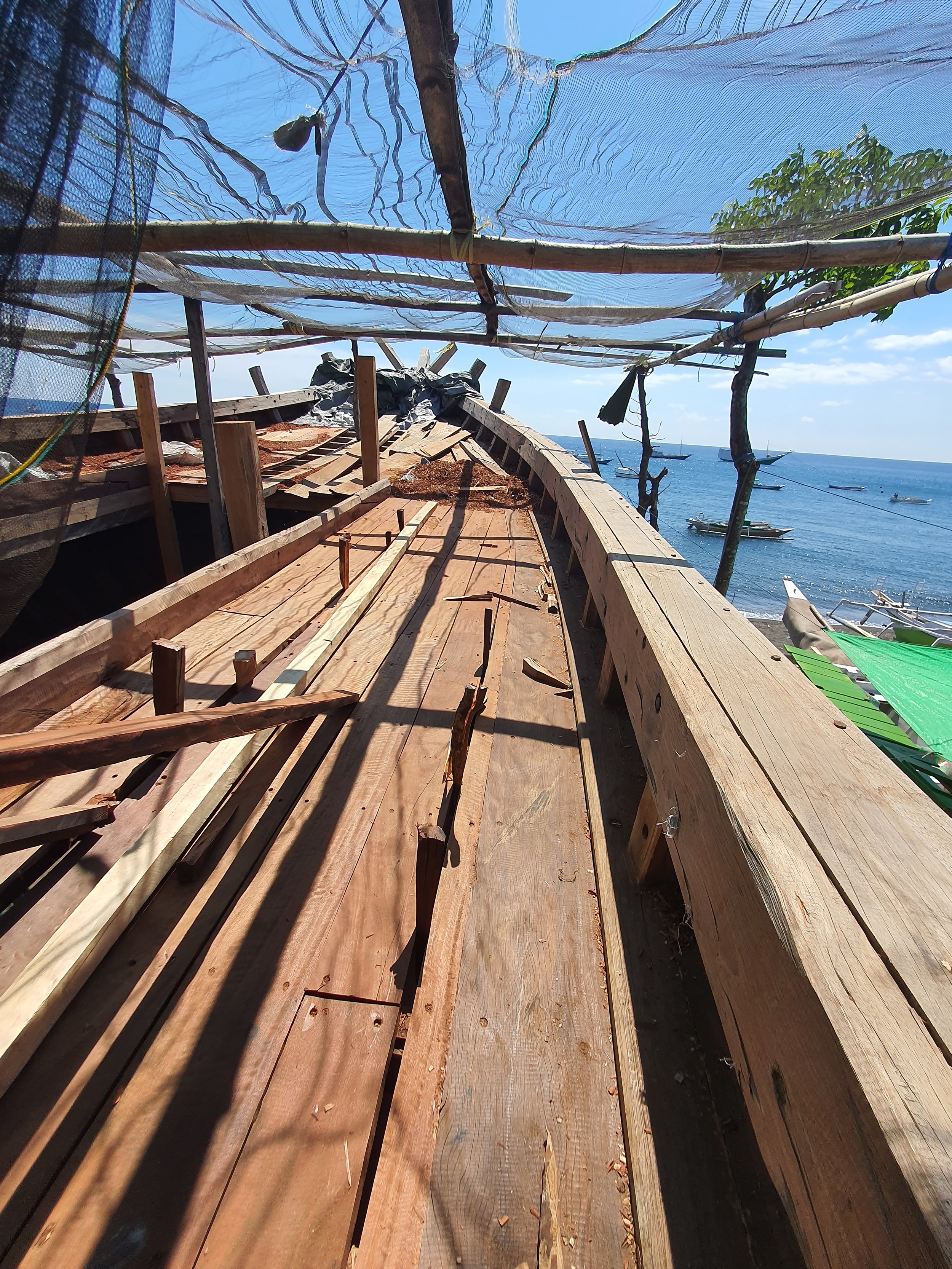Wooden boatbuilding in Were village, Sumbawa, Indonesia.
A Photo Essay by Martin Chambers
A Phinisi, previously a cargo trading boat Phinisi refers to twin masts. Nowadays used exclusively for tourism and you’d be lucky to see one with sails up.
In 2011 following the Fremantle to Bali yacht race we drifted east. At the village of Were on the North East coast of Sumbawa we anchored in a clear spot and were just settling down to lunch when the local police chief paddled out to us in a dugout canoe so tiny it can only have belonged to his small child.
The exchange, in broken Bahasa and English was to the effect we could not anchor here. We interpreted this as a pitch for payment, so we gave him a can of coke. This he drank, and then again demanded we move on, indicating a position a little further up the bay.
We moved, then after lunch went ashore to discover the real reason for his demand. They were about to launch a boat. Not any boat, a 60 foot timber hull that had been constructed on the shore, and we had been anchored in the launching line.
Were is a boat building village. This year (2023) we again visited while sailing a non-wooden yacht through the Indonesian archipelago. This time with a camera, on the beach we found as well as three 60 foot trading boats there were numerous smaller craft, dugouts, small fishing boats with outriggers, and larger planked boats that will be powered by the ubiquitous unmufflered petrol motor with a direct drive.
It begins with a pile of wood. Teak and mahogany is cultivated in East Indonesia but I was not able to get a name for this timber. This stockpile behind a nearly finished boat, mostly here curved pieces for knees and frames.
Kerryn inspecting the fixings. Wooden plugs are used for the main planking, above her you can see the protruding peg ends. The stock of planking will be used for deck and superstructure. Hull planking is twice as thick
Stern detail complete with puzzle joins. Although power tools are used the cuts are done by eye. Note also some steel bolt fixings. The timber is not steam bent but cut into a curve from a larger piece.
Once the hull form is complete it is sanded, (by machine) and painted. At launch, a timber track is laid across the beach. My guess is the finished boat will weigh about 60 tonnes.
Although Were is the specialist in larger boats, many smaller craft are also under construction. This one ready to launch
On deck of the larger boat looking into the hold. This will be a cargo trader.
Deck detail. The planking is held in place with timber wedges, then secured with the wooden plugs. There is no glue or nails.
The cabin where the crew will live and work. The roof top is covered with fabric and then painted to ensure waterproofness. While we were here the call to prayer came and we were left to inspect on our own. No OH&S here.
A completed trading vessel of the same design.
The beginnings of a new boat. The stem extends high into the sky, wrapped to protect the timber. The planking here is completed to the chine.
The stern, sternpost. Note the chainsaw. I can’t even cut a straight end of firewood but these guys shape the planking to perfection.
Here we have the keel and sternpost, underside of the above photo. The rudder and propellor will sit here. I saw no evidence of any engineering so I presume the finished boat, once launched, is towed to Bima for an engine install, although I could not verify this.
Some of the smaller boats in a production line. The keel stem and stern, with soon to be frames laid out on the ground below. This type of smaller fishing boat is called a Jukung and will have outriggers and a sail. You might see Jukung trolling for tuna under traditional sail.
The Jukung hull is planked first and these frame pieces are not yet attached.
The craftsmen. Rightly very proud of their workmanship.
You can see the wooden pegs here. On these smaller craft epoxy resin is mixed with sawdust to provide a filler glue.
Making a stockpile of the wooden pegs. He is shaping with the machete and testing to the hole in his backboard. (Sorry about the nudity.)
You can’t go anywhere in Indonesia without the kids getting involved. Were is difficult to get to other than by boat, and is most frequented by yachties. Unfortunately many yachties hand out gifts and this misdirected charity is now almost an expectation, some kids even asking us for money. Play guitar, sing songs, learn circus tricks, but please don’t ruin the future with indiscriminate charity.
This boat was under repair, replacing top planks that had rotted. Reported to be over 20 years old and soon to be ready for another 20 years. Boats beyond repair, (if not sold to people smugglers) are dismantled and timber reused. If the timber is not good enough for boat building it is sent to furniture makers or for home build use.





















